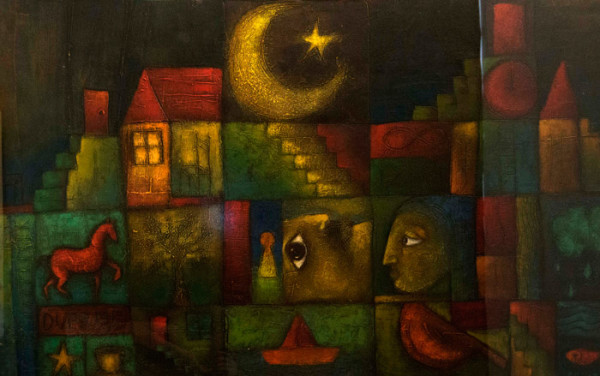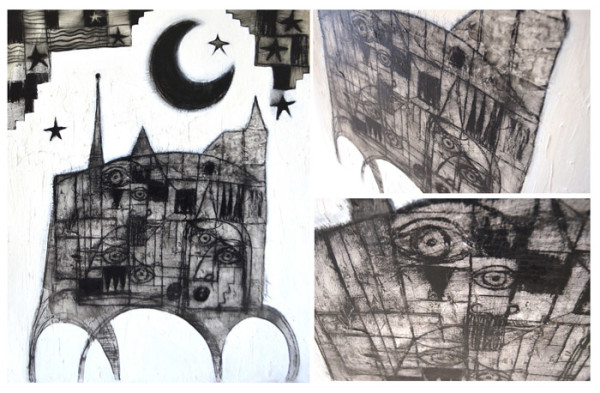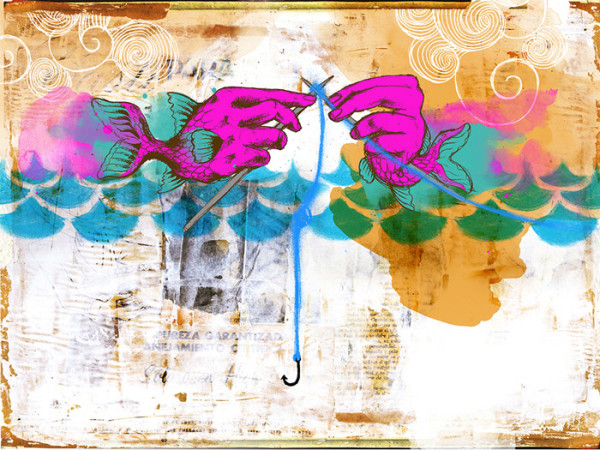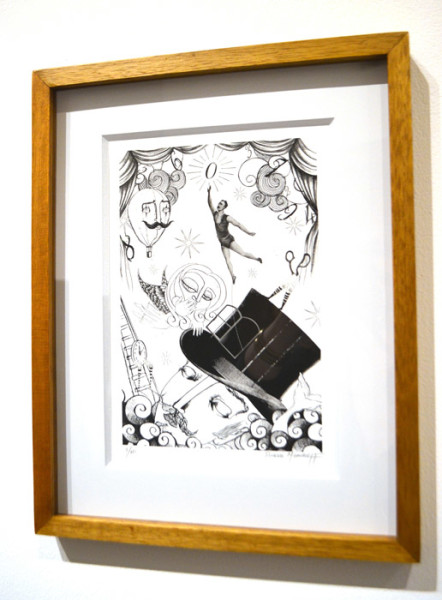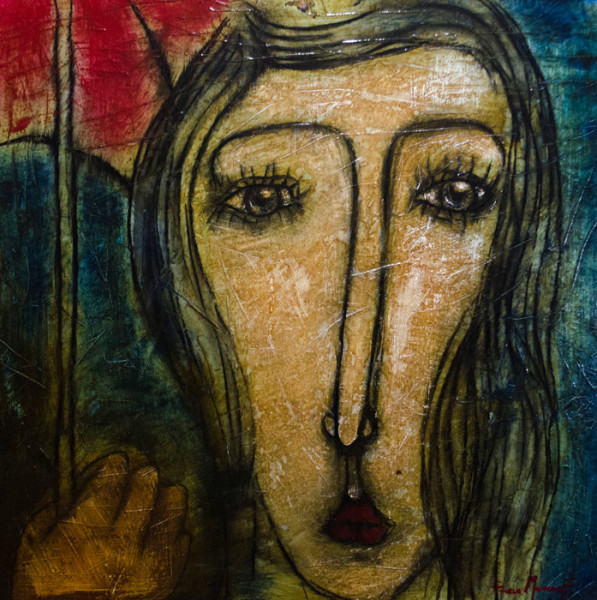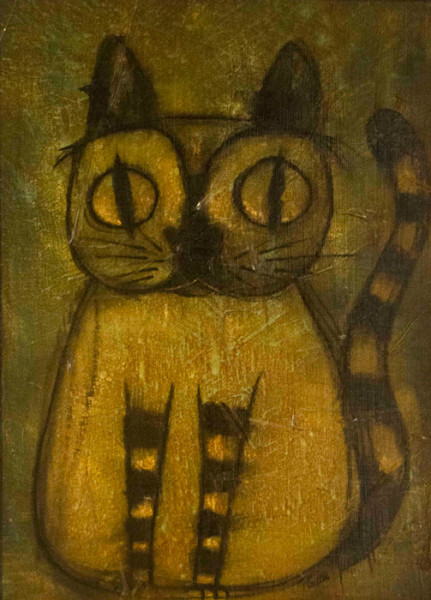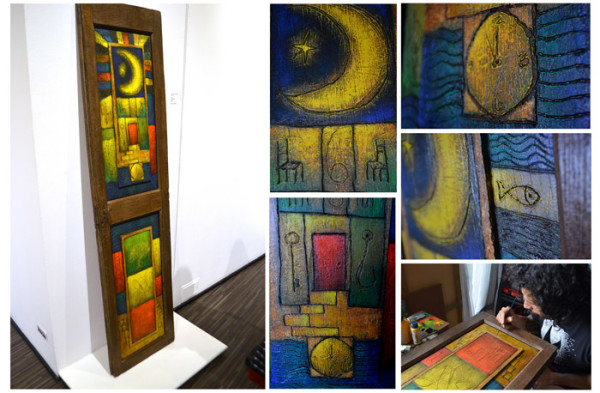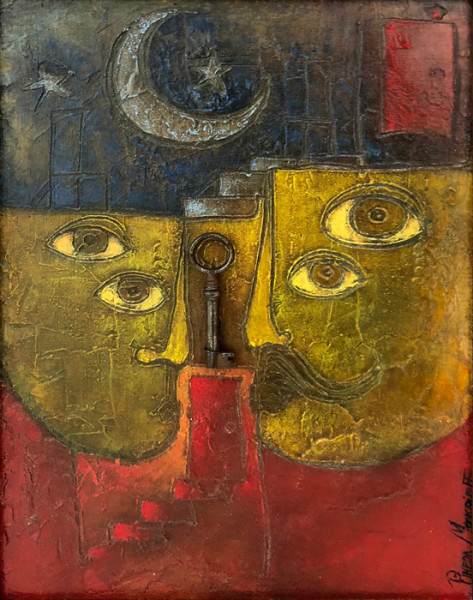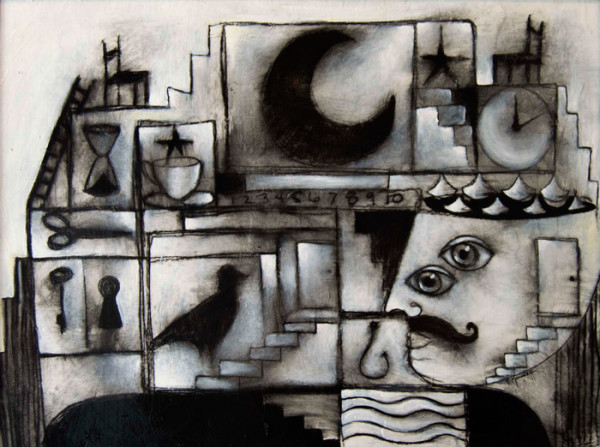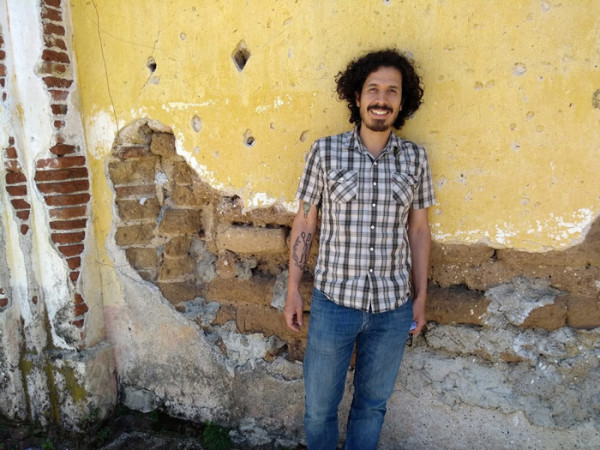César Pineda Moncrieff Artist Profile
Transitions & Explosions of Intuition a Portrait of Artist César Pineda Moncrieff
“Art is a key and a way to encounter other spaces within me. Something more ancient, it is something deeply intuitive … It is a connection with myself and something beyond that”.
— César Pineda Moncrieff
Transition. That inevitable, beautiful, complex and perhaps trepidatious moment when we transform from one state-of-being to another; from “thisness” to “otherness.” To be more exact, the lapse of time, a dream-like state, just before we forget who we are and pass into the great unknown. This is what artist César Pineda Moncrieff passionately explores in his new solo-exhibition Transitions at the Rozas Botran Gallery in Paseo Cayala (espacio Cultural FRB), zone 16 through October 31, 2018.
Moncrieff fearlessly examines the spiritual, psychological and aesthetic aspects of transition through a range of artistic work that encompasses surreal, cubist, realistic and abstract interpretations of the path to an alternate reality. Transition or transformation forms an important aspect of many spiritual traditions, such as in the bardo in Buddhism (a liminal state between death and rebirth) however, Moncrieff continues this theme from a personal and intuitive point of view with a wide, complex, dark but ultimately hopeful vision. His art melds memories, symbolism, abstract expression and nostalgia with the anticipation of newness and opportunity in this seminal moment.
“For many years, I’ve had the idea, practically a type of obsession, with the finality of life … in this exhibition, there are many lapses of time in which I try to enter the moment of intuition.”
Although the theme of transition may be interpreted as something dark, Moncrieff doesn’t see this as necessarily negative. “People can take it as is, but I think there is a bit of hope through the transcendence of life and the transformation of one point to another. We believe we have an end, but it transforms into something else. It is a hope for the transcendence to continue to exist in some form in another dimension.”
Moncrieff goes on to explain that although these moments of transition are unavoidable, they are worthy of exploration. “I think a lot of people don’t want to face this moment, but it will pass for all of us. I don’t know if we will pass this moment just once, or many times, but I think it is the only definite thing in this life. I feel that it provides a strong motive of inspiration and to search.
Transitions is Moncrieff’s first large-scale solo exhibition and for him, this exhibition is also about exploring new areas and breaking new ground. Moncrieff is well-known for his surrealistic dream-like narratives in his paintings. In Transitions, he continues with his theme of storytelling, however, with various shifts in focus to that of mini-worlds with fragments of beings and symbols that represent other parts of reality. His stories have evolved to reveal different kinds of narratives; they reflect particular moments, flashes and fragmentations that occur before a transformation.
Transitions is an eclectic mix of thoughtful ruminations and expressions of states of being outside or our normal perceptions of reality; it also represents an exciting trajectory of transitions within Moncrieff’s body of work. Moncrieff’s colorful digital pieces are a reminder of his previous focus on surrealistic dreamscapes and fantastical worlds such as in Danza del Destino showing two fish-like hand knitting with a fish hook. However, his majestic red horse, a fighting bull, a regal rooster with a stained glass-colored effect, and a graffiti-style sardonic green cat represent a group of characters where the artistic line is more realistic.
These pieces lead to a more whimsical part of Transitions, where we see a range of expressive cats, and Moncrieff explores the many sides of their feline personalities. Moncrieff notes that the cats were born out of experimentation with various materials and an opportunity to play with humor and character. “A cat can be a joker and have a dark and somewhat complex rogue-like character, and I love having the freedom to explore this.”
Moncrieff presents a number of nostalgic portraits of characters passing through their transformations. The striking Paraguas Rojo or the Golondrina series are romantic, melancholic, and almost peaceful interpretations of the event. Then there are the mysterious and far-away cities or castles that are “passages of memories of things forgotten.” Then one sees how Moncrieff begins to integrate characters into the cities, how they become interwoven into the fabric of a city. “It’s reminiscent of when you go to a place or city, and there is a particular energy and sensations that are a part of the architecture,” he says. “It is very much based on intuition.”
We can go on to explore paintings based on symbols and physical objects, some of these are even integrated into his pieces (La Llave and Doce Menos Cinco) to represent a materialization of these ideas. Finally, there are compositions where he has removed the cities and castles so that we are left only with the concept of place and parallel dimensions where transitions or transformations occur. This is most apparent in the visually impressive colorful mosaic, Sueño de Luces.
One of the most notable artworks in Transitions is Moncrieff’s painting of an old caoba (wood) door. The door is colorfully painted with symbols that light up the piece, exuding the idea of a magical entryway. The door itself is a recurrent and essential symbol in Transitions, a type of magical realism, integrated into some Moncrieff’s paintings. At the top of the door is a moon with brightly diffused yellow, it is at the center of a pictorial clock comprised of symbols which serve as anchors and fragments of life or another reality. “The beautiful thing,” he says, is that the door is an entrance to the sensations and memories of a person’s life. It’s a place where you leave your body, and you stop being yourself. That is why there are two chairs, they represent the moment when you sit in front of yourself.”
Numbers & Cups
Symbols and numerology are a frequent motif for Moncrieff. Keys, clocks, cups, trees, chairs, fishing hooks and other symbols act as glyphs and hidden messages that have more direct significance to the subconscious. They are used as messages to the one experiencing the transition. “They are not like words, you absorb objects or symbols, you can give them the meaning you want, but the object will remain.”
For example, Moncrieff uses the symbol of a cup in many of his paintings. The cup, Moncrieff says, is used as an entrance into dreams, like drinking a cup of tea in order to sleep. This drowsiness helps one enter into another lapse of reality. The other symbols have personal meaning for Moncrieff; however, he is hesitant to reveal definite translations. He says interpretation should be personal and fluid, that defining the meaning would limit the energy of the artwork. Moncrieff that numbers are also a relatively constant presence in his work as they are counters or containers of time that can reflect cycles that occur outside of our consciousness and mark key points in our transformation.
Should a Hand Look Like a Hand?
Moncrieff cites numerous and eclectic influences for this exhibition. Paul Klee, Chagall, Torres-Garcia and Tamayo are among the most prominent. Upon reflection, Moncrieff notes the forms of art he explores in Transitions include futurism, cubism, surrealism as well as Latin American and Maya art and archeological references.
Born in Guatemala City in the 1980s, Moncrieff found art in his early twenties. He always knew that he had an introspective and expressive nature. However, it wasn’t until the end of a long-term relationship that forced him to grow as a person and express himself in different and creative ways. His therapy was drawing and painting. As the publicity agency where he worked noticed his talent and encouraged him to continue, he has never looked back. For him art is more than just a calling, it is a way of life.
“Art is a key and a way to encounter other spaces within me. Something more ancient, it is something deeply intuitive. Sometimes it is an exercise that goes to the center of the abstract. It complicated to give and receive this information verbally. It is a connection with myself and something beyond that.”
For Moncrieff, finding his artistic style has been one of the most significant challenges. “Should a hand look exactly like a hand?” asks Moncrieff. Through years of studying art and experimentation, Moncrieff has found his own way to resolve artistic forms. In Transitions, he has maintained his unique voice while being genuine to his vision. Although there are variations, his themes, patterns, forms, and interpretations remain his uniquely. Moncrieff is adamant that transition is key to evolving as an artist, that it is necessary for a full artistic life. Life and motivation for Moncrieff are inexorably connected to that of the ability to express and to transform.
Explosions of Intuition & Spirituality
One of the most fascinating aspects of Transitions for Moncrieff was the process of creation and experimentation with a new way of working. In some of his original pieces, Moncrieff explores a pure, freer form of painting, creating the pieces in the same moment as a thought or ideas. Often in his previous work, he would make numerous sketches and intricately plan a scenario around a central character.
“What I needed was to explore and create in the moment that an idea came to me. They were like small explosions of intuition. I can compare it to an antenna recording signals and imbuing the material with that energy. If you step in newly paved cement and return in 50 years, that moment will still be there. That’s what I wanted.”
To achieve the desired effects in Transitions, Moncrieff uses a wide range of materials such as paper, masonite, canvas, wood and leather. He often paints with acrylic and creates textures with a type of plasticine. His recent experiments feature the use of carbon. Moncrieff notes that carbon can create smokey or blur pieces that give a more spiritual appearance. “It gives the sensation of a memory, or of an energy of a past life or something very far away,” he says. Moncrieff says he would like to continue to explore ideas of transition is his work and the spiritual theme of transcendence especially through the integration and use of objects and three-dimensional aspects.
Working with different techniques has meant discovering new things inside himself, says Moncrieff and that will undoubtedly continue throughout his career. However, ultimately, the various techniques will lead to the same place of capturing spiritual elements, exploring unknown universal experiences, and pushing the limits of understanding of our realities. “What I want is for people (in Transitions) is to have contact with something more spiritual and that they feel the sensation to cross into another dimension.” Certainly, the artwork of Moncrieff provides that opportunity to connect with something that is more than ourselves.
Transitions also feature artwork by Álvaro Sanchez. Fundación Rozas Botran Gallery (Espacio Cultural FRB) Paseo Cayalá, zone 16. Through November 3, 2018.
For more about César Pineda Moncrieff’s work, please see www.cesarpmoncrieff.com and Instagram:
instagram.com/cesar.pineda.moncrieff/
REVUE magazine article by Sonya Poller
